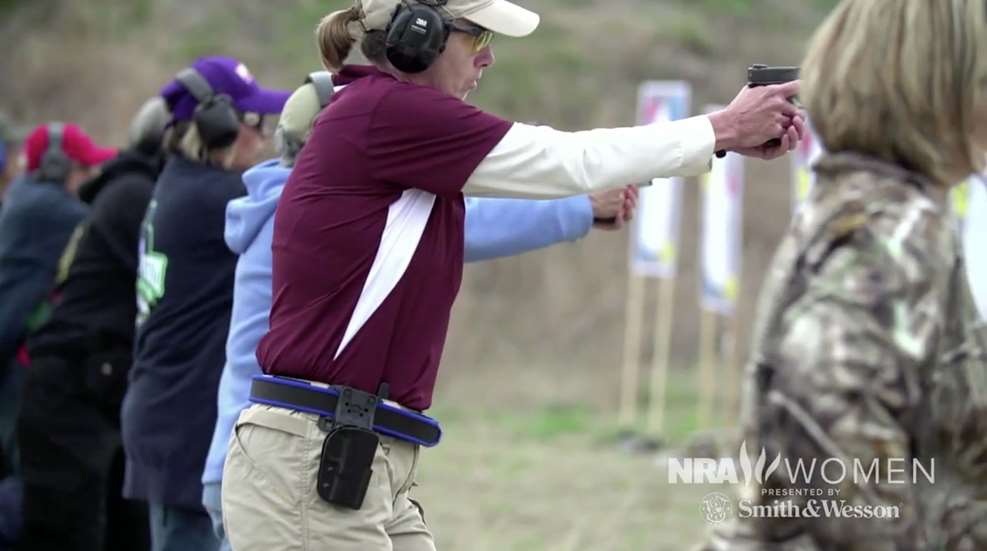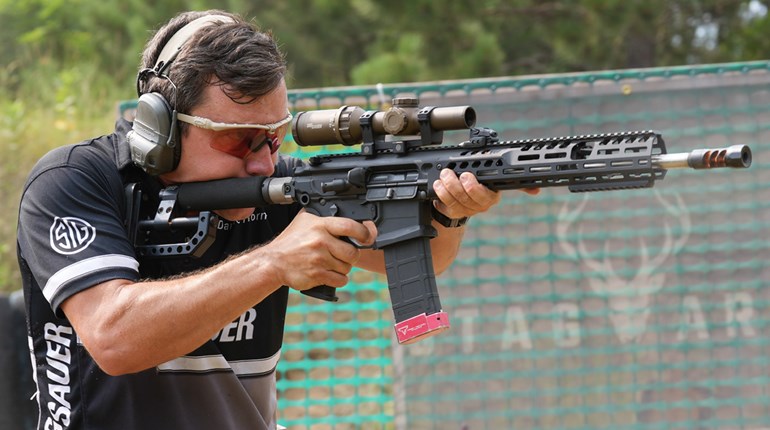
We all understand that getting good gun safety and handling training is critical. But sometimes, even the most dedicated student and the best instructor have trouble connecting. It’s important to understand that everyone learns differently. All people have different types of learning (auditory, visual, kinesthetic and reading/writing).
You probably noticed that those learning styles correspond roughly to our senses. Some people need to see, some need to hear, some need to do and some must take notes and come back for another class. If that gun training class didn’t make sense to you, maybe you need to engage another sense.
For example, in a previous article, I used a kinesthetic description—the motions of skiing—to help you imagine some shooting concepts. But as an instructor, I know not to assume that one description or example will “hit” every person the same. You need different cues to point to, different visual and physical cues, and different ways to help people experience them.
Here’s what I mean. Most people who have done even a little research into pistol shooting know that it’s not good to “turtle” or roll our shoulders up as if we are trying to squeeze the side of our neck. It’s a habit some people develop because they don’t know how to manage the force of recoil. Many people teaching someone to shoot don’t know how to manage those forces either, but they know “tactical turtle” isn’t right, so they say, “relax your shoulders.”
“Relax your shoulders” is a poor term, but it’s a phrase they heard as a way to teach proper form to manage the forces of recoil. However, relaxing implies not having any tension. Trouble is, ideally there should be tension in your shoulders, back and arms when you shoot. How and where you hold and maintain the tension depends on your size, strength and what platform you are shooting.
Cues for Weight Management While Shooting a Pistol:
- Auditory
—Keep your weight on the balls of your feet.
—Hold your weight right behind the big toe, on the inside edge of the ball of the foot. - Visual
—Video or have someone watch that your toes do not come off the ground
—If you see your sights coming very high and off the target and back down slowly, you’re likely being very passive in how you manage recoil; don’t be a limp noodle! - Kinesthetic
—Feel your toes “grab” the ground inside your shoes.
AFTER CONFIRMING AN EMPTY GUN, have a partner push against you by tapping the bottom of your pistol/dust cover, and don’t let that push you off balance. If your toes rise off the ground, if you are pushed off balance, adjust the depth of your stance.
—Keep your weight low—like you would to “dig” a ball in volleyball. - Reading/Writing
—Write down what the proper position should be and then assess if you are following those steps
—Draw the forces that act on your body during the act of firing a gun: recoil, weight of the gun, weight in your body, functional tension you hold and the direction you hold it, etc.
Cues for Tracking Your Sights and Bringing Them Back on Target:
- Auditory
—Watch the front sight through recoil, and see it come back onto the target.
—Focus on your front sight and where it is on the target, actively watch it come back to the same place or transition to your next target. - Visual
—Take a video and watch your muzzle. Do you manage the recoil well? Or can you control it better to see your sights sooner? - Kinesthetic
—Pull down on a string that goes from your front sight to an imaginary ceiling.
—With and empty gun, feel the force of something pushing up against the bottom of your pistol / dust cover, and don’t let it make your sights come off target. The tension you feel in the muscles to counter the force is the tension you need to hold in your muscles before and while you are shooting. - Reading/Writing
—Write down the steps in the shooting cycle as they pertain to your sights. Are you following them?
—Take notes on what aspects of grip or recoil management you need to work on to help you better control forces and get back on target faster.
Cues for Grip and Managing Recoil:
- Auditory
—Make sure you’re gripping with enough force.
—Do not grip with your fingertips. - Visual
—Do you see space between your palms? Close it.
—Is the web of your strong hand high on the backstrap? If not, move it higher. - Kinesthetic:
—Grip with force, with both hands.
—Use a “clamshell” or “nutcracker” motion to engage muscles in your shoulders and chest. - Reading/Writing:
—Write down the aspects of grip you want to work on.
—Watch a video of your shooting and make notes about what you see your hands doing before and after you shoot. Do you have to adjust your grip?
What I hope you take away from reading this is an appreciation for the fact that we can always learn something differently whether that is looking at the task from a different perspective, through the lens of a different sport, or by being open to someone else’s take on the task at hand. We might be a kinesthetic learner who have never heard a good auditory explanation of a skill, but someone with the right words might open us up to ideas we weren’t ready for before!













































